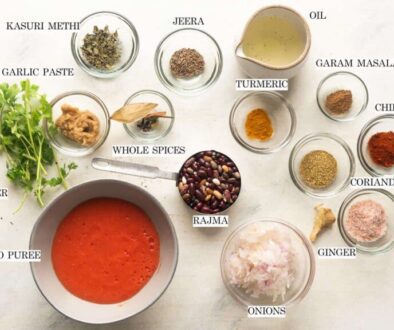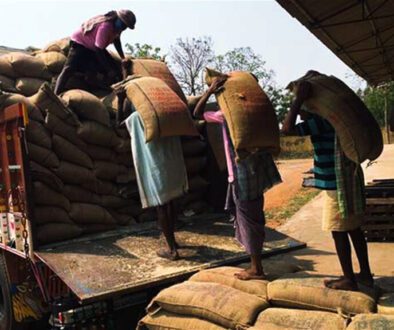How well do you know your rice?
Rice is a main staple in more than 100 countries worldwide. In some households, rice is included with more than one meal a day. This starchy high-calorie grain is generally low cost, making it accessible to all and a vital base of many diets. Each country showcases a rice specialty to reflect local spices and taste preferences: risotto in Italy, paella in Spain, jambalaya in the southern U.S., coconut rice in Colombia, steamed rice in China, rice and beans in Mexico, and sweet rice in Portugal, to name a few.
The scientific name for rice is Oryza. Oryza sativa is the most common species and is subdivided into the long-grain indica, and short-grain japonica. Tools for farming rice have been found in China dating back 8000 years. Merchant traders helped the gradual spread of rice across the continents.
Source Of*
(*primarily whole grain varieties)
- Fiber
- Vitamins B1 (thiamin) and B6
- Magnesium
- Phosphorus
- Selenium
- Manganese
Types
There are thousands of types of Oryza sativa, which can differ in size, thickness, stickiness, color, aroma, and flavor. Rice is often broadly categorized based on its shape or method of processing:
Long, short, or medium grain
This refers to the length and width of the rice grain after cooking:
- Long grains have a slender kernel over four times as long as they are wide. When cooked, long grain rice stays separate and fluffy (e.g., Jasmine and Basmati rice).
- Medium grains have a shorter, wider kernel, yielding a tender and semi-sticky consistency when cooked (e.g., Arborio rice).
- Short grains have a kernel only twice as long as they are wide, and yield the stickiest texture when cooked (e.g., “sushi” rice).
Whole or refined grain
Is the rice in its whole, intact form (like “brown” rice), or has it been milled and polished (like “white” rice)?
- Whole: Just like all whole grains, rice naturally contains three edible components—the bran, germ, and endosperm (the inedible hull is removed). “Brown” rice is the typical whole grain rice, though this describes not a particular variety but the natural color of the grain. However, whole grain rice is not limited to one color—it also comes in shades of black, purple, and red. Because the fibrous bran layer and nutrient-rich germ remain intact, these varieties typically take longer to cook, and have a nuttier and chewier texture than refined white rice.
- Refined: Rice that is polished to remove the bran layers and embryo so that only the starchy white endosperm remains—hence the name “white” rice (again, this refers to the color and not one particular variety). The milling and polishing process removes the majority of naturally occurring B vitamins, minerals, phytochemicals, and fiber, so B vitamins and iron are added back. Food labels will display the term “enriched” to indicate this. However, only a fraction of the original amount of these nutrients is added back.
Of course, when it comes to cooking, specific varieties of rice are often chosen for their unique characteristics. Here are a few popular types:
- Arborio: A medium-grain rice popular for making risotto and puddings. It undergoes less milling than long-grain rice so it retains more starch, which is released during cooking to produce a naturally creamy consistency without becoming mushy. Unlike other rice cooking methods, water must be added to Arborio rice gradually in segments, with constant stirring, to produce the creamy texture of risotto. Arborio rice is available in both brown and white versions.
- Basmati, Jasmine: These are varieties of long-grain rice with fragrant aromas that are available in both brown and white versions.
- Black (Forbidden), Purple, or Red: These types of short or medium-grain colorful rice contain a natural plant phytochemical called anthocyanins, a flavonoid with antioxidant properties that is also found in blueberries and blackberries. Their nutritious bran and germ layers are intact similar to brown rice.
- Glutinous: Named for its glue-like consistency (not for gluten, which it does not contain), this short-grain rice is especially sticky when cooked. This is because it contains primarily one component of starch, called amylopectin, while other types of rice contain both amylopectin and amylose. Glutinous rice is particularly popular throughout Asia, and is available in a range of colors including white, brown, and black/purple.
Rice & Health
1) Diabetes
Because large amounts of rice are eaten in some countries, along with an increasing worldwide prevalence of type 2 diabetes and insulin resistance, rice intake’s effect on health has been studied.
The glycemic index (GI) is a measure of how quickly and how much a food raises one’s blood sugar levels after eating. Rice is considered a high GI food but it varies depending on the type and amount of processing (processing increases the GI). Reports show the GI of rice ranging from 48-93. Low GI foods have a rating of 55 or less, medium GI foods are 56-69, and high GI foods are 70-100. The average GI for brown rice is low at 55, whereas the GI for white rice is higher at 64. Observational studies have found an association between a high GI diet and greater risk for type 2 diabetes.
- A meta-analysis of seven large cohort studies in Asian and Western populations found a 55% increased risk of developing type 2 diabetes when comparing the highest to lowest intakes of white rice in Asians. This same study also found a minor increased risk in Western populations, although the finding was not significant, potentially a result of their lower overall rice intake. Another meta-analysis of 16 international cohort studies evaluating whole grain and refined grain intake found a 32% risk reduction in type 2 diabetes risk with a high whole grain intake including brown rice (3 servings daily), while white rice was associated with an increased risk of diabetes in some studies but not all.
- In another study observing three large prospective cohorts in the U.S. of 39,765 men and 157,463 women, it was found that those who ate five or more servings of white rice weekly compared with those eating less than one serving a month had a 17% increased risk of developing type 2 diabetes. In contrast, the highest intakes of brown rice of two or more servings weekly compared with the lowest intake of less than one serving a month was associated with an 11% reduced risk of type 2 diabetes.
The message of these studies was consistent with public health recommendations to replace refined grains with whole grains, and to choose at least two servings of whole grains a day to reduce type 2 diabetes risk.
2) Cardiovascular health
In a large cohort study of 71,750 women from the Nurses’ Health Study and 42,823 men from the Health Professionals Follow-up Study, intakes of brown rice did not lower the risk of ischemic stroke. However, intakes of brown rice in this group were generally lower than intakes of other grain foods that did decrease stroke risk like whole grain cereals and bran. A systematic review of 45 studies on whole grains did not find a reduced risk of stroke, heart disease, or cancer from intakes of either white or brown rice.
Prepare
- Before cooking, rinse rice in cool water until it runs clear to remove excess starch. If rice is obtained from bulk bins, rinsing also helps to remove dust or any unwanted material. It may then be soaked to reduce cooking time and stickiness. Keep in mind that excess washing and rinsing may remove some water-soluble B vitamins, especially for polished enriched white rice, in which the vitamins have been sprayed onto the surface of the grain.
- Rice is typically boiled in water or steamed, as it absorbs water and softens during the cooking process. Long-grain varieties tend to produce fluffy separated grains after cooking, while short or medium grains become sticky.
Make
- Follow package directions as different varieties of rice require differing amounts of water and cook times. In general, use a 2:1 ratio for cooking rice, or 2 cups of water per 1 cup of rice. Bring water to a boil in a saucepan. Add rice and stir into water. Place a lid on the pot and reduce heat to low-medium. Simmer for about 20 minutes for white rice, and 40-45 minutes for brown rice and other minimally processed varieties. Remove from heat and allow to steam in the covered pot for 5-10 minutes. Fluff rice with a fork to separate the grains.
- For extra flavor, use chicken or vegetable broth instead of water while cooking, or add spices into the cooking water. If using fresh chopped herbs, such as chopped parsley, dill, or chives, gently stir them into cooked rice after it is removed from the heat but still steaming in the pot.
- Easy ways to use cooked rice or leftover rice:
- Sauté chopped vegetables and cooked meat or tofu in a pan, then add cooked rice and stir mixture well.
- Add bulk to soup by throwing in a cup of cooked rice.
- Add a handful of cooked rice to a salad.
- For an easy vegan rice bowl, mix together one cup of cooked rice, ½ cup cooked beans, ½ cup salsa, and a handful of greens.
About Farm Express
We are a wholesale supplier of food grains, spices and whole foods. We are currently available in 500 stores across Goa.

Farm Express © 2022



